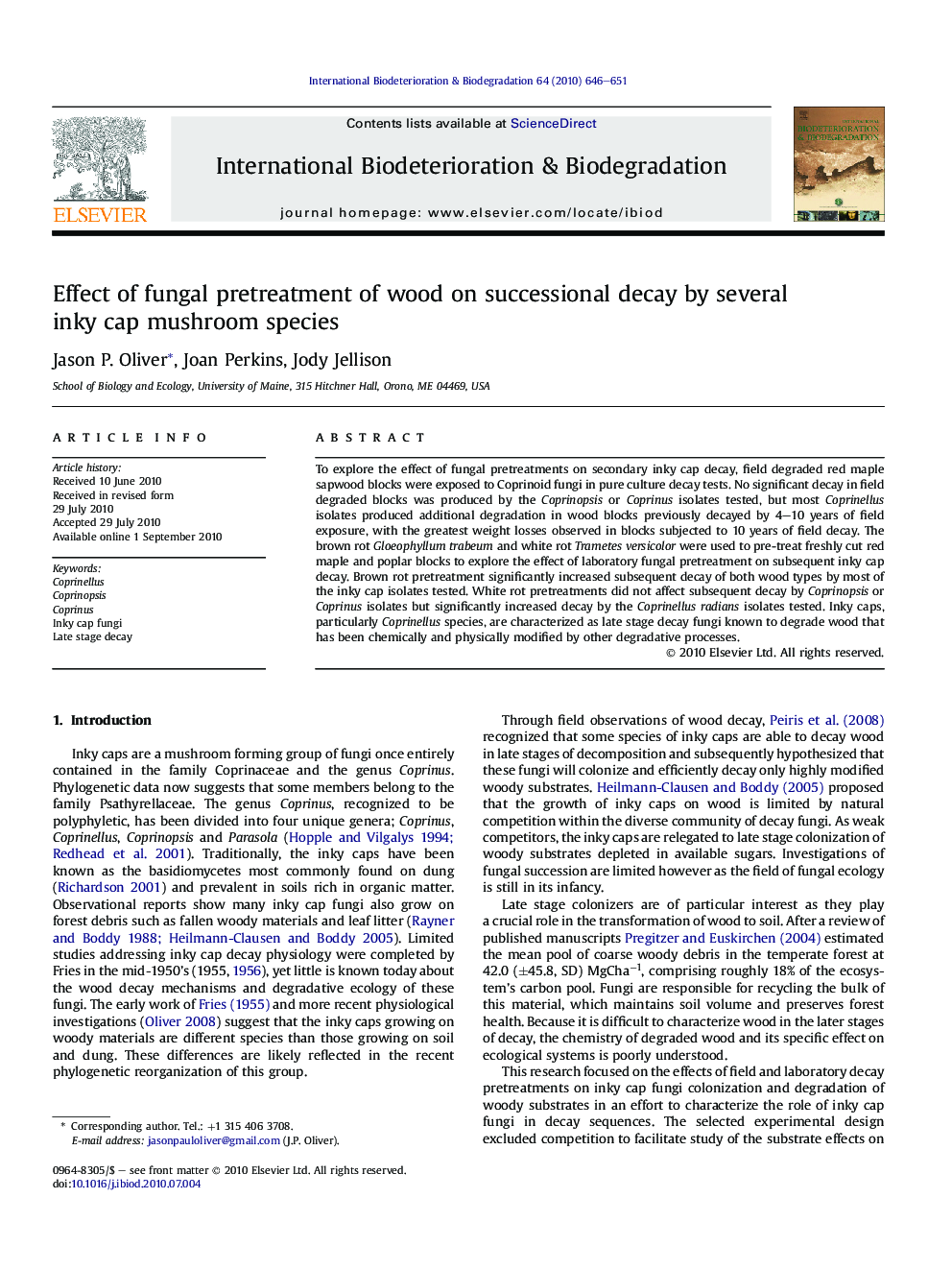| Article ID | Journal | Published Year | Pages | File Type |
|---|---|---|---|---|
| 4365593 | International Biodeterioration & Biodegradation | 2010 | 6 Pages |
To explore the effect of fungal pretreatments on secondary inky cap decay, field degraded red maple sapwood blocks were exposed to Coprinoid fungi in pure culture decay tests. No significant decay in field degraded blocks was produced by the Coprinopsis or Coprinus isolates tested, but most Coprinellus isolates produced additional degradation in wood blocks previously decayed by 4–10 years of field exposure, with the greatest weight losses observed in blocks subjected to 10 years of field decay. The brown rot Gloeophyllum trabeum and white rot Trametes versicolor were used to pre-treat freshly cut red maple and poplar blocks to explore the effect of laboratory fungal pretreatment on subsequent inky cap decay. Brown rot pretreatment significantly increased subsequent decay of both wood types by most of the inky cap isolates tested. White rot pretreatments did not affect subsequent decay by Coprinopsis or Coprinus isolates but significantly increased decay by the Coprinellus radians isolates tested. Inky caps, particularly Coprinellus species, are characterized as late stage decay fungi known to degrade wood that has been chemically and physically modified by other degradative processes.
